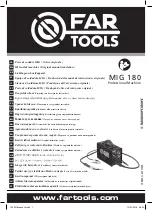
Rev. 7/14/2021
LLCB-202058 MANUAL
Copyright 2021 Vestil Manufacturing Co.
Page
6
of
8
Step 3
: Raise the platform to bring it to the level of the load. Turn the winch handle clockwise to
raise the platform.
Step 4
: Place the load on the platform. The load should rest against the vertical wall (the “back”) of the
platform. The center of the load should either align with the center of the platform or be behind it
see red shaded areas in diagrams below. Secure the load to the platform, for example with
ratchet straps, to prevent sliding, rolling, etc.
Step 5
: Lower the platform until it is just a few inches above the ground. Move the load and lifter by
pushing on the operator handle. At the unloading destination:
•
Lock the casters or set the brake or floor lock;
•
Pump the foot pedal to raise the platform to a comfortable height; and
•
Remove the load.
U
Step 6
U
: Return the lifter to its storage location. Lower the platform. Engage the floor lock. Store the lifter in a
dry, indoor location.
RECORD OF SATISFACTORY CONDITION (THE “RECORD”)
Record the condition of the lift truck before putting it into service. Thoroughly photograph the unit from
multiple angles so that all operating mechanisms are clearly visible. Take close range photographs of the
labels. Raise and lower the platform. Describe the operation of the winch. Describe sounds heard as the
platform rises and descends. How much effort is required to turn the winch? Apply the floor lock.
Photograph the floor lock. Try to move the truck with the floor lock applied and describe how the lock
resists movement. Collect all photographs and writings in a single file. Give the file a name that clearly
identifies it. This file is a record of the unit in satisfactory condition. Compare the findings of all inspections
to the RECORD to determine whether the truck is in satisfactory condition. Purely cosmetic changes, like
damaged paint/powder coat are not changes from satisfactory condition. However, touch-up paint to
be applied to all affected areas as soon as damage occurs.
Properly centered
load:
Load rests against
(vertical) back of
platform and
center of load no
farther forward
than center of
platform.
Side view
Overhead
view
Load center should be
aligned with or behind center
of platform (shaded area).
Improperly
centered load:
Center of load in
front of platform
center.
Center of platform
Properly applied load.
Improperly applied load


























